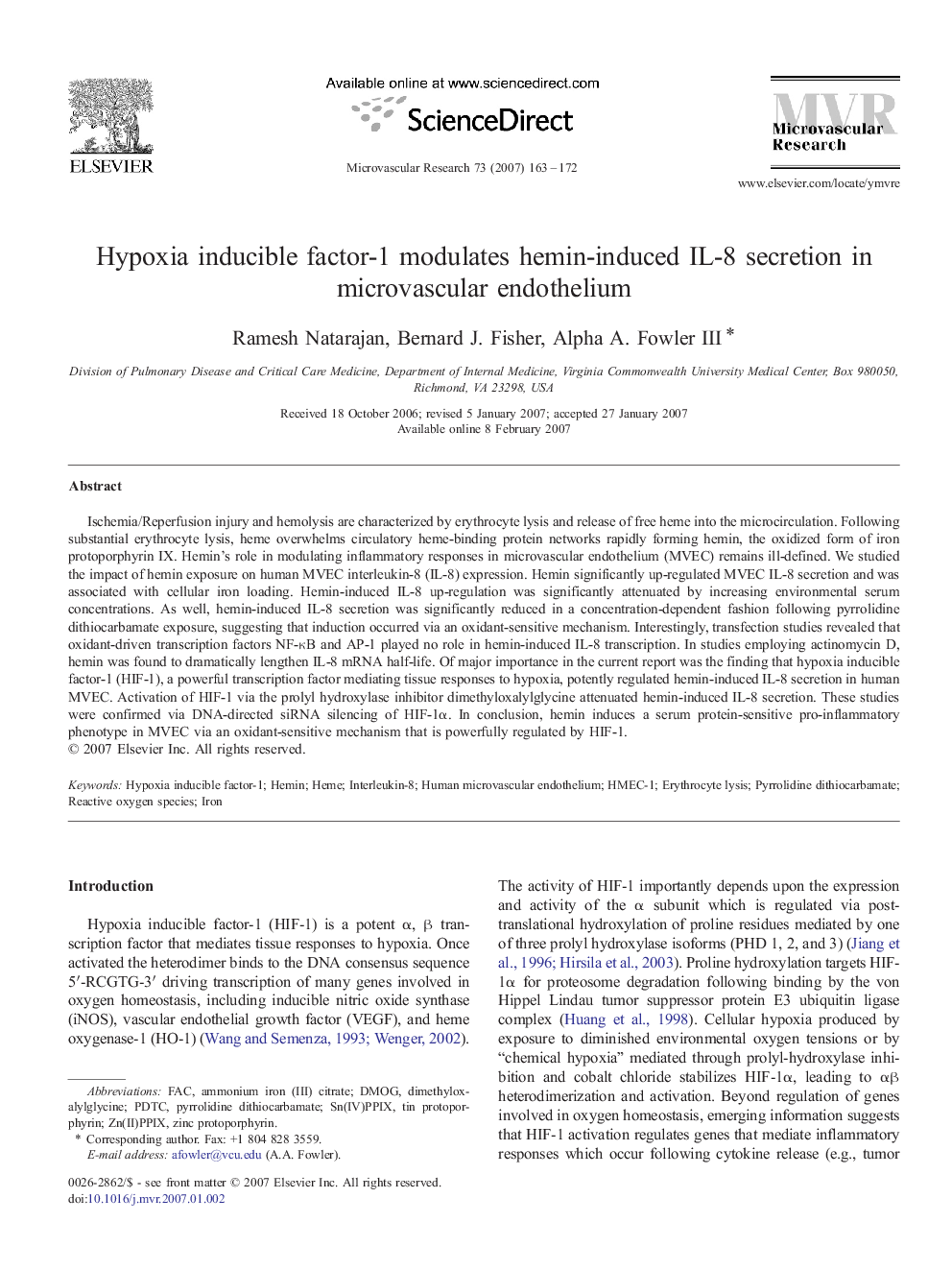| Article ID | Journal | Published Year | Pages | File Type |
|---|---|---|---|---|
| 1995497 | Microvascular Research | 2007 | 10 Pages |
Abstract
Ischemia/Reperfusion injury and hemolysis are characterized by erythrocyte lysis and release of free heme into the microcirculation. Following substantial erythrocyte lysis, heme overwhelms circulatory heme-binding protein networks rapidly forming hemin, the oxidized form of iron protoporphyrin IX. Hemin's role in modulating inflammatory responses in microvascular endothelium (MVEC) remains ill-defined. We studied the impact of hemin exposure on human MVEC interleukin-8 (IL-8) expression. Hemin significantly up-regulated MVEC IL-8 secretion and was associated with cellular iron loading. Hemin-induced IL-8 up-regulation was significantly attenuated by increasing environmental serum concentrations. As well, hemin-induced IL-8 secretion was significantly reduced in a concentration-dependent fashion following pyrrolidine dithiocarbamate exposure, suggesting that induction occurred via an oxidant-sensitive mechanism. Interestingly, transfection studies revealed that oxidant-driven transcription factors NF-κB and AP-1 played no role in hemin-induced IL-8 transcription. In studies employing actinomycin D, hemin was found to dramatically lengthen IL-8 mRNA half-life. Of major importance in the current report was the finding that hypoxia inducible factor-1 (HIF-1), a powerful transcription factor mediating tissue responses to hypoxia, potently regulated hemin-induced IL-8 secretion in human MVEC. Activation of HIF-1 via the prolyl hydroxylase inhibitor dimethyloxalylglycine attenuated hemin-induced IL-8 secretion. These studies were confirmed via DNA-directed siRNA silencing of HIF-1α. In conclusion, hemin induces a serum protein-sensitive pro-inflammatory phenotype in MVEC via an oxidant-sensitive mechanism that is powerfully regulated by HIF-1.
Keywords
Related Topics
Life Sciences
Biochemistry, Genetics and Molecular Biology
Biochemistry
Authors
Ramesh Natarajan, Bernard J. Fisher, Alpha A. III,
